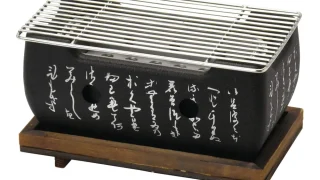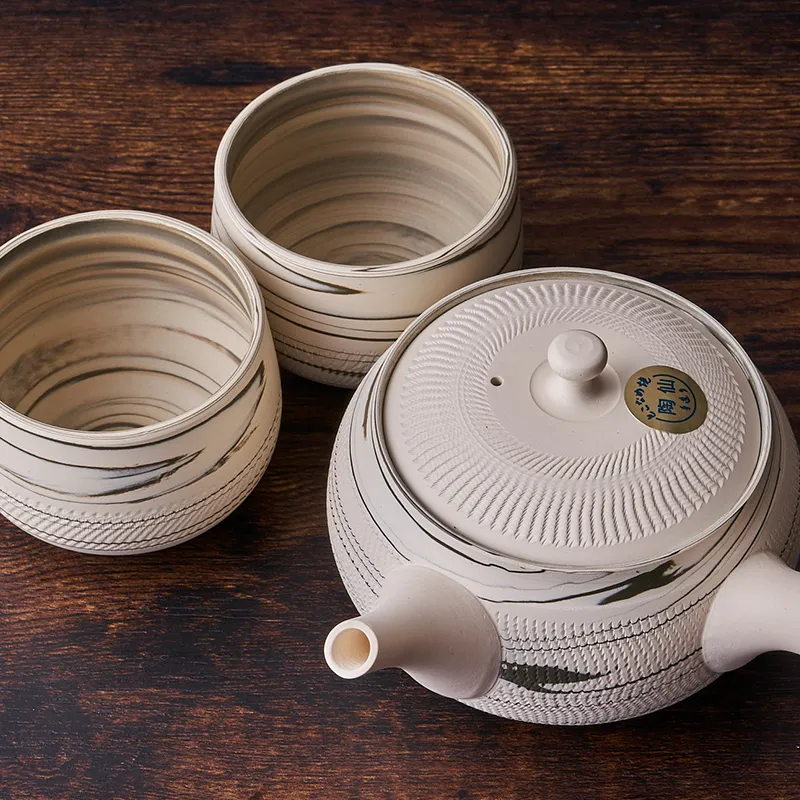Characteristics and history of Tokoname-yaki Kyusu teapot
The six kilns that represent Japan are known as the Six Ancient Kilns of Japan. Tokoname ware is one of the six ancient kilns of Japan, and is said to be the largest production area in Japan. They are used not only as Kyusu teapots and Yunomi teacups, but also in a wide range of fields such as building materials.

Tokoname ware is a type of pottery that is mainly produced in Tokoname City, Chita Peninsula, Aichi Prefecture. In normal pottery making, if clay contains iron, it would turn black or swell during firing, making it difficult to handle. I succeeded in making uniform reddish-brown pottery by taking advantage of the iron content.
Other features include the traditional technique of yoriko-zukuri, in which clay strings with a thickness of 7 to 10 centimeters are piled up in a spiral to form large products such as pots and pots. Techniques such as shaving and polishing that take advantage of the fine details are also used.
Contents
That shape of "Kyusu teapot" was born in Tokoname.
The reddish-brown Kyusu teapot called 'Shudei' is representative of Tokoname ware using the reddish-brown firing technique mentioned above. One of the features of the Tokoname-yaki vermilion Kyusu teapot is the good spout for tea and the easy-to-hold handle.
The origin of the Kyusu teapot is that the founder, Jumon Sugie, who was highly respected for his Shudoyaki pottery, created the ``Shudei teapot'', which is the basis of the shape of the modern Kyusu teapot.
This is because, long ago, he learned the teapot manufacturing method (panpan manufacturing method) of Yixing Kiln in Jiangsu Province, China from the Chinese literary person Kinshiko, and the Chinese literary thought, and later Tokoname Kyusu teapot. has achieved its own evolution with the traditional potter's wheel manufacturing method. This "Red clay Kyusu teapot" saved Tokoname ware from sluggish demand and created a new path for Tokoname ware, such as producing the first Living National Treasure of the production area. *What is vermilion ware? A reddish-brown pottery imported from China.
What kind of Tokoname ware is used elsewhere?
In fact, the red bricks of Tokyo Station in Japan are also Tokoname ware. In addition, it is said that the amount of maneki-neko produced is the largest in Japan. In the city of Tokoname, there is also "Tokoname Manekineko Street".
There are three factors behind the development of Tokoname in the ceramics industry. First of all, we were blessed with soil, which is an essential raw material for pottery. There was plenty of wood to use as fuel for kama-yaki. Furthermore, due to the nature of the land facing the sea, there was a “means of transportation” that could transport a large amount of heavy pottery at once by ship. These three things are said to have supported Tokoname, a major pottery production area.
History of Tokoname ware Kyusu teapot
At the end of the Edo period, representative works of Tokoname ware were born. During the Bunkyu era (1861-1869), the founder Jumon Sugie, who was highly respected for his Shudei ware, created the ``Shudei Kyusu teapot'', which became the basis for the shape of the modern Kyusu teapot. .
In 1998, Jozan Yamada, who mastered the craftsmanship of the vermilion Kyusu teapot, a masterpiece of Tokoname ware, became the first Living National Treasure in Aichi Prefecture for his "Kyusu teapot."
Author Profile
Latest entries
 matcha bowl / Yunomi tea cup2025年1月21日Kutani ware teacups are very easy to use
matcha bowl / Yunomi tea cup2025年1月21日Kutani ware teacups are very easy to use Japanese style BBQ stove grill2025年1月20日Combine a Japanese style BBQ stove grill and sake cups for a special dinner
Japanese style BBQ stove grill2025年1月20日Combine a Japanese style BBQ stove grill and sake cups for a special dinner SAKE bottle and SAKE cup2025年1月17日Mino Ware Gold-painted Sake Ware is Very Beautiful
SAKE bottle and SAKE cup2025年1月17日Mino Ware Gold-painted Sake Ware is Very Beautiful NEWS2025年1月17日Tatami rush grass nap Fluffy Foldable Sleeping Mattress is comfortable
NEWS2025年1月17日Tatami rush grass nap Fluffy Foldable Sleeping Mattress is comfortable



